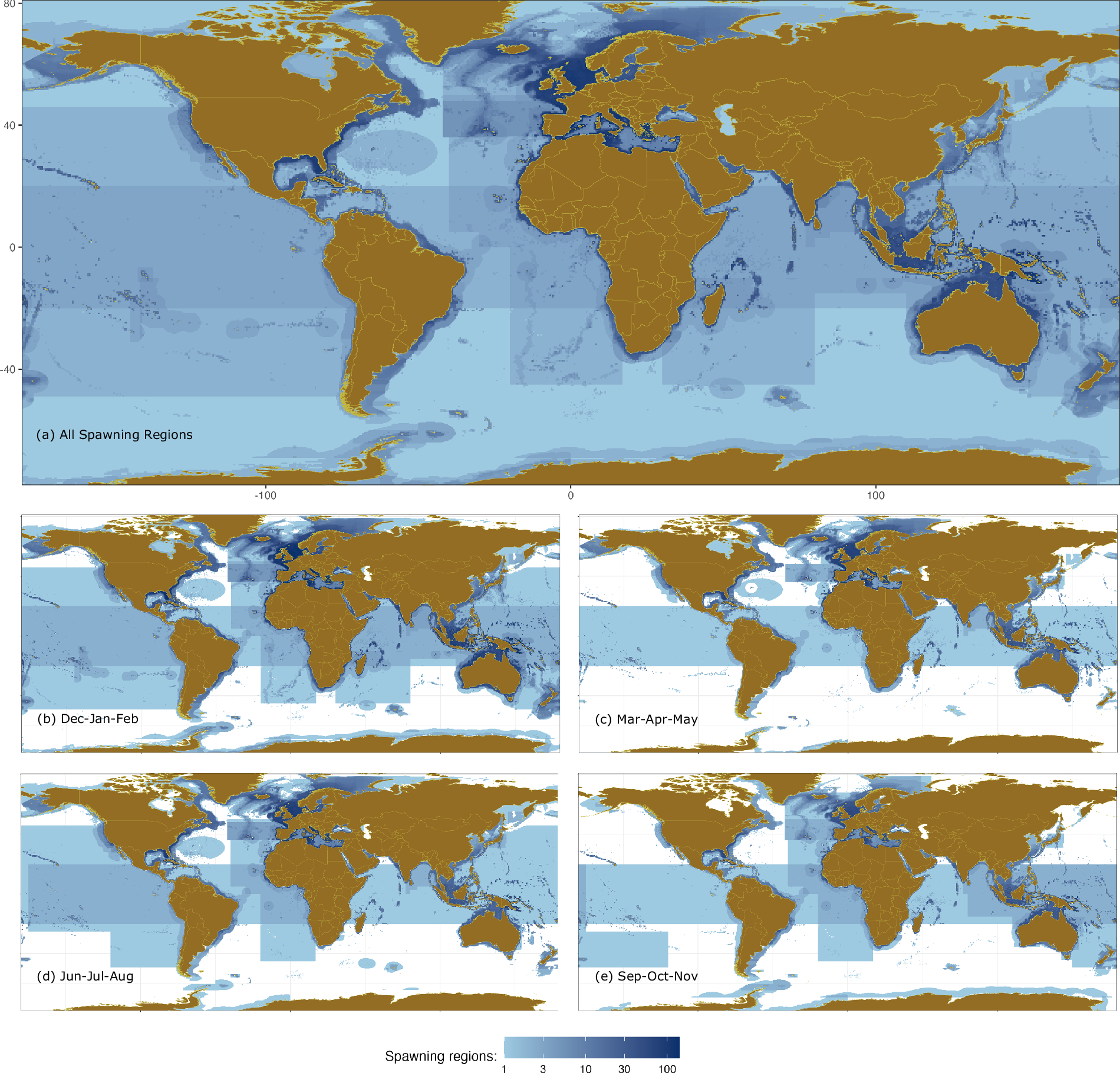Fish spawning locations are a crucial input into fisheries management and conservation plans, and many stocks are especially sensitive to the environmental conditions within these localized zones. Globally collated data on spawning locations across many species has been unavailable, hindering global stock assessments and analyses of sustainable development and global environmental change. To address this, Dr. Kimberly Oremus led the creation of a geocoded fish spawning dataset using qualitative spawning information from FishBase and Science and Conservation of Fish Aggregations (SCRFA). With the help of Audrey Ostroski (class of ‘20), she recently published the spawning locations of 1,045 marine fish species into 2,931 regions in Nature Scientific Data. Each spawning region is defined by one or more polygons, and most spawning regions are associated with spawning months. The resulting dataset covers oceans globally. This dataset will be useful to scientists studying marine fish population dynamics and their interactions with the physical environment on regional to large scales.
